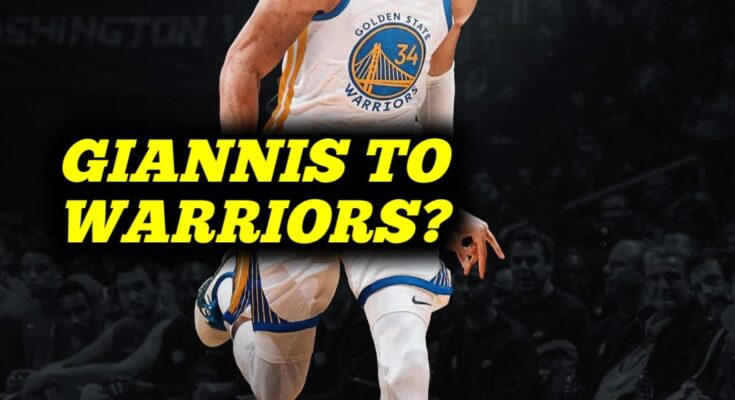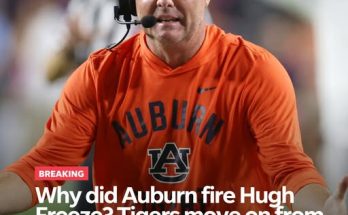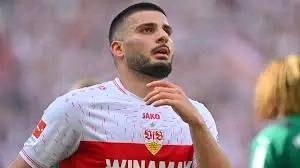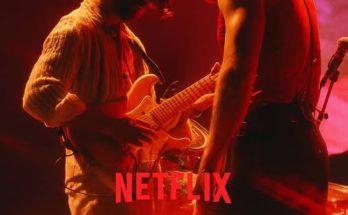The Golden State Warriors find themselves at a crossroads, and at the center of it stands Jonathan Kuminga — a talented, athletic forward who’s simultaneously seen as a vital part of their future and a potential ticket to something bigger. As the franchise transitions from its dynastic era with Stephen Curry, Klay Thompson, and Draymond Green, the Warriors are operating with one eye on their current roster and another on the horizon — a horizon that could include Giannis Antetokounmpo, should he become available. The result is a patient but tense standoff centered around Kuminga’s value, his future contract, and the delicate balance between competing now and preparing for the next star-driven shift in the NBA.
Kuminga is still just 22 years old, yet he’s already in the midst of shaping a critical turning point for a franchise with championship expectations. After being selected seventh overall in the 2021 NBA Draft, Kuminga’s development has been a roller coaster. He’s shown flashes of elite two-way potential — athleticism, defensive versatility, fast-break dominance — but he’s also struggled with consistency, decision-making, and off-ball movement, particularly in the Warriors’ read-and-react system. Still, after a strong second half of the 2024–25 season and a breakout playoff performance when injuries forced him into a larger role, Kuminga is now widely seen as Golden State’s most valuable young asset.
That value is precisely why the Warriors aren’t rushing to move him. They’ve made it clear: they won’t trade Kuminga unless they receive full value in return. In other words, they’re not giving him up for anything short of a significant upgrade — either a star player now or a path to one in the near future. At the heart of this strategy lies the possibility, however remote, that Giannis Antetokounmpo could become available via trade. If and when that happens, Golden State wants to have a complete set of trade chips ready to go. Kuminga is the biggest one.
This situation is further complicated by Kuminga’s contract status. He’s a restricted free agent, and negotiations have reportedly hit an impasse. He’s believed to be seeking over $30 million annually — a figure the Warriors are hesitant to meet given their luxury tax situation and cap flexibility goals. The front office has offered a more modest deal in the range of $20–23 million per year, but Kuminga and his camp believe his value has outgrown that number. Now there’s real concern within the organization that Kuminga could take the one-year qualifying offer — a short-term move that would keep him under contract for a season but also give him a no-trade clause, effectively removing him as a movable piece in any future deal.
That scenario would be disastrous for the Warriors. If Kuminga signs the qualifying offer, the team loses its ability to include him in trades without his consent. That could close the door on any package involving him for a superstar acquisition. It also puts pressure on Golden State’s salary cap management, because they’d then risk losing him for nothing the following offseason. Essentially, if he can’t be extended or traded now, they’d be stuck — unable to pivot, unable to plan.
It’s not just about Kuminga himself. This entire dilemma has stalled the Warriors’ offseason. They’ve made no major free-agent signings or trades to this point, and that’s no accident. The front office is operating with caution, not because they’re indecisive, but because every decision they make could have ripple effects on a bigger strategy. If Kuminga’s deal inflates too high, it could limit the team’s ability to pursue veteran contributors. If they trade him too soon or for too little, they could be sacrificing the exact package needed to entice a team like Milwaukee — should Giannis ever become disillusioned with the Bucks’ trajectory.
Giannis has not requested a trade, and the Bucks remain firmly in win-now mode, but the Warriors are preparing as if that door could open. Golden State has a history of strategic patience when it comes to high-stakes targets. They understand that superstar trades don’t materialize overnight. They take months of groundwork, positioning, and asset accumulation. Keeping Kuminga under a manageable contract — or at least retaining the rights to control his movement — is a central piece of that preparation.
Around the league, teams have inquired about Kuminga. The Bulls, Suns, Heat, and Kings have reportedly expressed interest, particularly in sign-and-trade arrangements that would allow Golden State to extract value while letting Kuminga walk. Some deals have been floated that would bring back useful veterans, draft picks, or frontcourt depth. But Golden State has turned them all down. Why? Because none of them represent “full value.” None of them keep the door open for a Giannis pursuit or a similarly seismic addition.
The Warriors are calculating in this regard. Their leadership — including general manager Mike Dunleavy Jr. and team owner Joe Lacob — are balancing short-term competitiveness with long-term strategic positioning. They know that Stephen Curry’s window is closing. He remains elite, but he’s approaching his late 30s. Draymond Green is still impactful, but his offensive limitations are more pronounced. Klay Thompson is gone. The team has signed Jimmy Butler to help stabilize the roster, but it’s clear that to contend at the highest level, Golden State will need one more high-impact star — and they’re preserving every asset they can for that moment.
From Kuminga’s perspective, this is both flattering and frustrating. He wants to be paid and treated as a cornerstone. He wants a starting role, consistent minutes, and the ball in his hands more often. And in stretches last season, he looked ready for that responsibility. But Golden State’s system doesn’t always accommodate individual growth — it demands selflessness, precision, and adaptation. Kuminga hasn’t always thrived in that structure, and he may see a better personal fit elsewhere. Still, for now, he remains in limbo, caught between a franchise trying to win now and a young player trying to establish himself.
Meanwhile, the rest of the roster is effectively on pause. The Warriors can’t fill out their depth chart until they know what happens with Kuminga. That affects free agency decisions, mid-level exception usage, and even training camp priorities. The ripple effects are real. It’s rare that one player — especially one without All-Star credentials — can dictate the course of an entire offseason. But that’s what Kuminga is doing, not out of force, but out of function. His value, his contract, and his future all tie into something much bigger than himself.
The Warriors’ stance isn’t entirely about Giannis, but it’s undeniably influenced by that possibility. Antetokounmpo represents the kind of transformational player who could extend Curry’s title window. He’d thrive in Golden State’s system, and his presence would instantly vault the team back into Finals contention. But to get him — or a player like him — the Warriors need a package that includes promising youth, draft capital, and matching salary. Kuminga fits all three categories. That’s why they’re holding tight.
There’s risk in this approach. If Giannis never becomes available, or if another team swoops in with a better offer, the Warriors could find themselves empty-handed — with Kuminga gone, or unhappy, or overpaid. There’s also risk in overvaluing potential. Kuminga may never become the star some believe he can be. He may plateau or clash with the system. He may ultimately not be worth the trouble. But the Warriors are betting that, if they’re patient and strategic, they’ll be ready when the next opportunity arrives.
Golden State’s dynasty was built on bold moves, smart scouting, and calculated risk. Keeping Kuminga — for now — is just another chapter in that playbook. They’re not clinging to him out of sentiment. They’re positioning him as a chip, a piece of leverage, a thread that could tie their present to their future. Whether that future includes Giannis or not remains to be seen. But what’s clear is that the Warriors won’t make a move until they know they’re getting maximum value — for Kuminga, for the roster, and for the championship aspirations they’re not ready to abandon.
The clock is ticking. Training camp looms, and decisions can’t be delayed forever. At some point, Kuminga will sign — either with Golden State or elsewhere. And when that happens, the Warriors will finally act. Until then, they wait. Not out of fear, but out of focus. They’re holding their cards, betting big, and refusing to fold unless the right pot is on the table.



